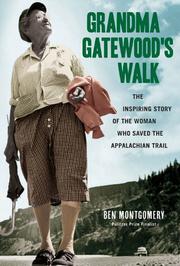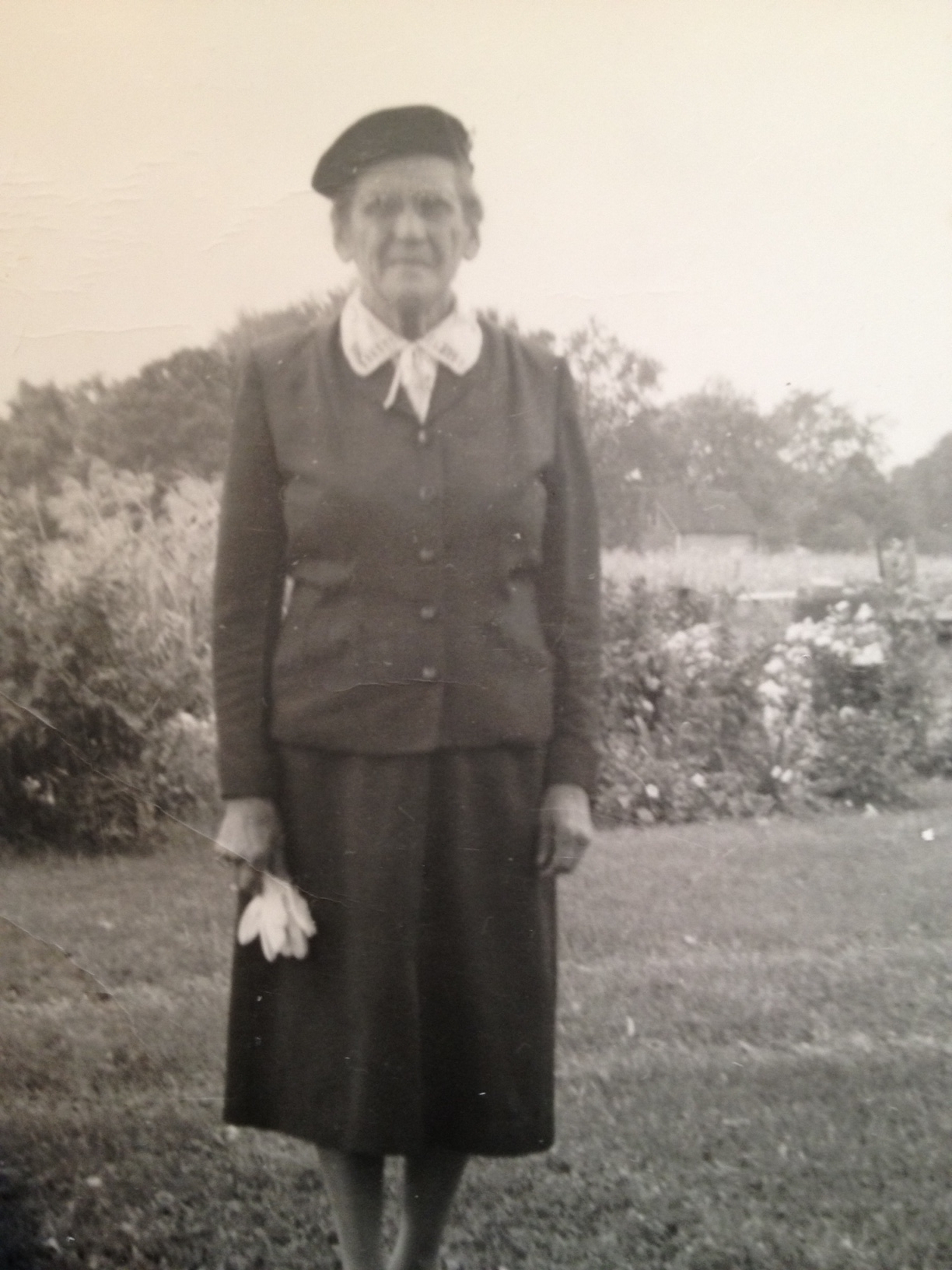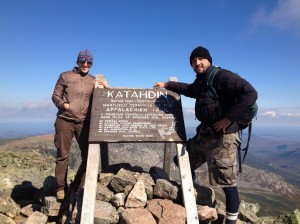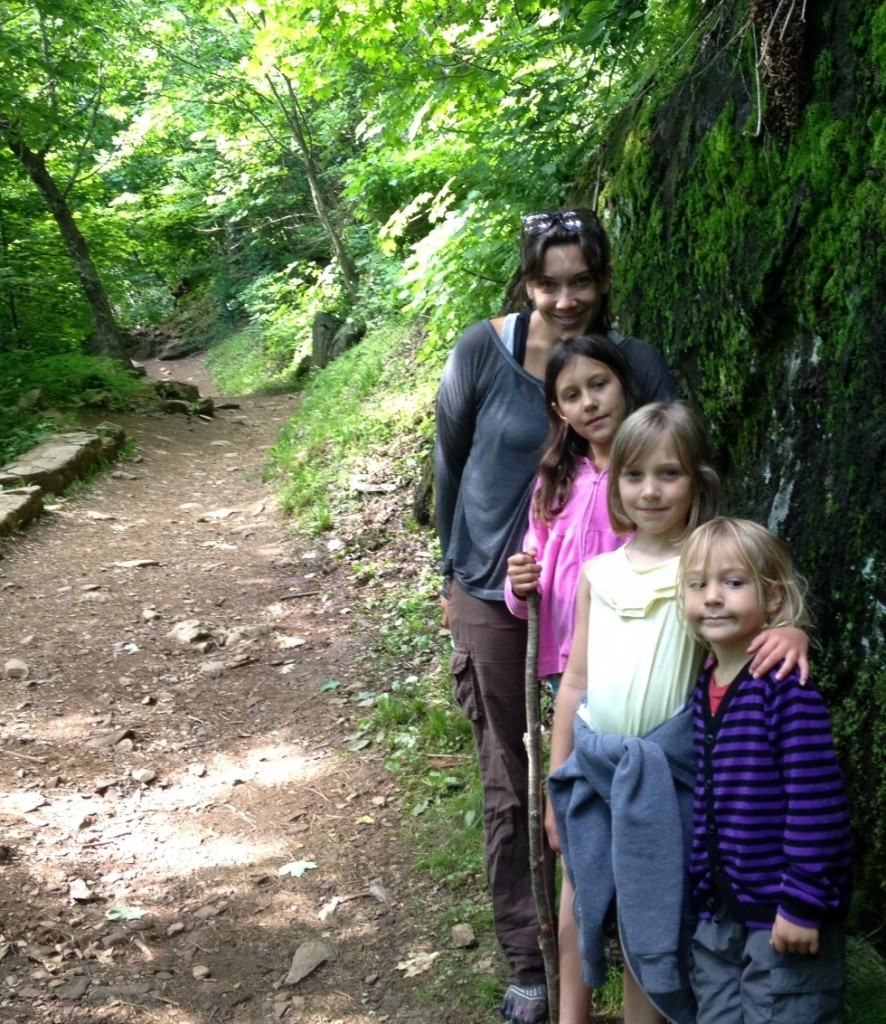One night in January 2013, deep into the writing of Grandma Gatewood’s Walk, I found myself alone at the keyboard, crying. Weeping, really.
Thinking back, the storm of depression and anxiety that made me bawl that night was brought on by a mess of psychological pinpricks I’m just not used to: the remorse of a blown manuscript deadline; the regret of missing a big bunch of time with my three little kids in the past 13 months; the lack of, um, quality time with my wife; the stress of a second deadline, this one firm; the fear of turning in something awful.
All that was swirling, but what I believe now is that doing a book you care about is a powerful, emotional thing. That part surprised me.
 I’ve never made myself cry writing a newspaper story. This was different. The reporting was so much deeper. The thinking was so much more intense. You spend so much time alone with words trying to make readers like your characters that you wind up caring for them in unexpected ways. I did, anyhow.
I’ve never made myself cry writing a newspaper story. This was different. The reporting was so much deeper. The thinking was so much more intense. You spend so much time alone with words trying to make readers like your characters that you wind up caring for them in unexpected ways. I did, anyhow.
That night, I felt like I was at a funeral. Or maybe I felt like I knew a funeral was coming, but there was nothing I could do to stop it. I was at the section of the book where the outline I’d hacked out months before called for the death of my main character.
It sounds stupid, but I never saw it coming. I’ve heard that writing is sort of like playing God, and maybe that’s right.
On the screen, I had given birth to Emma Gatewood in 1887 in southeastern Ohio. I grew her into a woman and made her rear children. I put her in all sorts of situations, saw her get beaten by her husband, saw her fight back, saw her in a jail cell, saw her get her walking legs late in life and do incredible things.
Now she was walking into her twilight. Now she was catching a cold.
She died humming “The Battle Hymn of the Republic” in 1973, five years before I was even born, but writing about it 40 years later was almost so real that I could hear it myself. I realized I was actually mourning the death of a woman I’d never met.
Two years before, I had only the vaguest idea who Emma “Grandma” Gatewood was and no ambition to do a book about her. My mother, an Ohio native, told me stories about Emma when I was a kid. Emma was my mother’s great-aunt, and my mother had inherited the stories from her own mother. I knew Emma was eccentric, that she’d become the first woman to thru-hike the Appalachian Trail alone, that she’d scared off a black bear with her umbrella, that people often mistook her for a tramp on her long-distance hikes.
That was about it.
But late in 2011, I wrote a story about an unsolved Florida lynching that got a lot of attention, including an offer to do a book on it for a university press. I’ve always wanted to do a book, and this was the first sniff I’d had, so I took the offer seriously and talked to some friends who had written for both the university press and the trades. The pros — It’s a BOOK, and it’ll be in the LIBRARY — didn’t outweigh the cons — You won’t make much money, if any, and a book is a lot of work. Then, a stroke of luck: I got an agent without shopping for an agent.
I’ve known people who had agents and it always sounded so cool when they mentioned it that I never had the nerve to ask: How did you get an agent? I still don’t know the answer to that; I just know mine came in an email.
Jane Dystel has represented friends of mine at the Tampa Bay Times and the Poynter Institute, and she read my story. Her first email said she didn’t think the lynching was a book, but she liked what she read and wondered if I had any other ideas. In my excitement, I commenced a frantic, hilarious search that fell just short of throwing the question out there on Facebook and Twitter, thank God.

Emma Gatewood (photo courtesy of Ben Montgomery)
Jane wanted a couple sentences on each idea. I took that as the sign she knew what she was doing. I had the first idea within a few days. I’d done a story for the Times and Radiolab on the outlaw Christopher “Little Houdini” Gay, the South’s most unfortunate escape artist. He’d broken out of jail 14 times, which meant he’d been caught 13.
I was killing myself for another idea when Emma Gatewood came to mind. I talked to my mother and was surprised by how little I had known about our distant relative. She was not only the first woman to solo thru-hike the AT but also the first person, male or female, to hike it twice and three times. And she walked the Oregon Trail at 71. But the public story sort of petered out there. And there was no information at all about why she had done what she’d done, all starting at the age of 67.
I found Emma’s youngest daughter, Lucy, in her 80s and living not far away, in Jacksonville, Fla. We talked, and she confirmed that no one had done a book on her mother. Then she teased me: She had kept boxes of her mother’s memorabilia, letters, journals and photographs. It had all been preserved and was waiting for the right person. A filmmaker had expressed some interest a few years before, but abandoned the project.
She also said that there was a side of the story nobody really knew: that her father was abusive and oppressive and had beaten Emma for 30 years. Three of Lucy’s 11 siblings were still alive and could testify to the bloodshed.
I wrote to Jane, two paragraphs.
She liked the HIKING GRANNY story, as she called it, and sent me an agency contract and a one-page explainer on how to do a book proposal.
Reflecting on this part of the process now, I should have done more reporting for the proposal. I read a lot about the AT, and I interviewed Lucy Gatewood more and got part of Emma’s trail journal: enough for a sample chapter and outline. But so much of the discovery came after I turned in the final proposal, which ran about 45 pages. I had probably done 5 percent of the reporting it would take to make the book.
I thought about that after it sold, quite quickly, to Chicago Review Press, a classy independent publisher that likes those kinds of niche books. The proposal would have been much stronger had I known, for instance, that Emma hiked through back-to-back hurricanes that killed more than 200 people in New England. Or that she’d bunked with gangsters from Harlem in the Green Mountains.
But we had an offer, and that made me happy. Jane thought it was solid for a first-time author. It was split: half upon signing the contract, half upon delivering the manuscript.
I spent the first half, all of it, on reporting. (And a little bourbon.)
Emma’s children (all in their 80s and 90s now) lived in Arkansas, Arizona, Ohio and Jacksonville, and I wanted to talk to them in person. I also wanted some modern scenes, so I accompanied Lucy and her sister Louise and their families to Boiling Springs, Penn., to a ceremony at which their mother was inducted into the Appalachian Trail Hall of Fame.
I had about a year to do the book, and I couldn’t afford to quit my job at the Times, so thru-hiking the trail was out of the question. Instead, I read a ton about the AT, and a ton about walking — from Thoreau to Rebecca Solnit — and I shoehorned my book research into a project for the newspaper: I told my editor I’d walk to work for a week, in July, in car-centric Florida. The double-dipping, surprisingly, turned into one of my most popular stories that year; the Weather Channel did a story on it and I got invited to a join a SXSW panel about how to make people care on social media.
 I also targeted my travel to spots that I had to see, places that were important to Emma. I climbed Mount Oglethorpe in Georgia and hiked stretches of trail in Pennsylvania, Virginia, West Virginia and Maryland. Most important was Mount Katahdin, in Maine. To recreate Grandma Gatewood’s mountain ascent, in 1955, I hired the trail supervisor at Maine’s Baxter State Park as guide and gave him all the information I could about her hike. He led my wife and me on a trek that followed the route she would have taken.
I also targeted my travel to spots that I had to see, places that were important to Emma. I climbed Mount Oglethorpe in Georgia and hiked stretches of trail in Pennsylvania, Virginia, West Virginia and Maryland. Most important was Mount Katahdin, in Maine. To recreate Grandma Gatewood’s mountain ascent, in 1955, I hired the trail supervisor at Maine’s Baxter State Park as guide and gave him all the information I could about her hike. He led my wife and me on a trek that followed the route she would have taken.
There was a brief but scary hiccup in the middle of all this. Some of Emma’s descendants had the idea that a book would fetch lots of money — like, millions of dollars — and they felt like the family should benefit financially. We had a tense conversation at an Italian restaurant. I explained that I was pretty sure books like this don’t make money like that, and that if there was some windfall from a movie deal or if it sold incredibly well, they could trust me to honor Emma Gatewood in my decisions. They seemed to understand and I was able to continue in their good graces.
All this reporting took about seven months. I’ve always had trouble writing anything before all the questions are answered, so I didn’t sit down at a computer until I was finished reporting. We got back from the last trip to Maine on Oct. 1, and my deadline was Jan. 1. In hindsight, this was stupid. I had about 90 days to write, and the contract called for 70,000 words. Goal: 1,000 good words a day, to leave a little time for revision. A friend, Hank Stuever, told me I’d have days where I wrote 500 words and days where I wrote 2,000. He was right, though there were more 500-word days than 2,000-word days.
The longest story I’d written before this was a 6,500-word feature for the Times. This was new territory. With that kind of room to write, I was worried about my tendency to build scaffolding around stories in rough drafts, using long and lazy transitions, overstatement and redundancy. I wanted a tight book, so I put extra time into my outline, which was really just a rough but detailed sketch of two simple, parallel arcs: Emma’s inaugural trip along the trail, and her backstory. I wanted to stay out of the story until each arcs climaxed, at about 50,000 words in. Then I decided I’d step in, in first person, for analysis and to serve as a guide to explore her impact on the trail and her motivation. I taped the outline — about 10 pages — on the wall above my computer.
I hate when writers overstate how difficult writing is. This wasn’t roofing a house or hauling hay, but it was a different kind of hard. I failed to predict how exhausting 1,000 words a day would be. I’d get home from work and dread sitting down to write. There were wasted nights procrastinating on Twitter or doing more unnecessary reporting. About 30,000 words in, I realized I had to stop rewriting and editing what was already on the page and just plunge ahead. When I hit 40,000 words, it started to feel significant. Milestones like that were motivating.
Alas, as the deadline approached and my agent asked about progress, the folly of my ambition became clear. The publisher pushed the deadline back 45 days. Somewhere in those last few weeks, Slate published a short piece about the frenetic writing schedule of David Maraniss, who was closing out his book on Obama. He wrote:
In those 40 days, I finished two chapters and polished the rest. I wrote the final paragraph on Oct. 23, a Sunday. I have written 10 books, and the feelings at the end are the same every time: exhaustion, relief, joy, and somehow surprise—not emptiness but shock that the work is over.

The Montgomery family (photo by Ben Montgomery)
I could do that. I wanted that, and I was close, but the manuscript lacked something. I had a solid ending that matched my outline, but I needed a scene to wrap things up, and it wasn’t in my notebooks. I booked a plane ticket and flew the next day to Ohio, one last time. I asked Emma’s daughter, Louise, to accompany me to the Winter Hike in Hocking Hills State Park, an event her mother had led for years before her death. We joined 4,000 people on a walk down Emma Gatewood’s favorite trail, through snow and ice. I had my scene. It was the last time I’d see Louise, who died several months later.
Back home, I finished the first solid draft — 70,033 words — with eight days to spare and passed it out to trusted friends at the Times who gave me great, if quick, feedback. I put a hard copy in the mail and felt again the pangs of sadness, and none of those things Maraniss says he feels. I won’t pretend to know what something as serious as postpartum depression is like, but I wanted the book back immediately. I wanted to protect it and keep the bad people away. I could do better, I thought.
That self-doubt stuck in my throat for a while before it gave way to a sense of accomplishment. Better than that, I could rejoin the world: my wife, Jennifer, who handled our household single-handedly; my kids; the Dads Club at their elementary school; the newspaper stories I’d let dangle.
It struck me that the sadness I’d felt writing Emma Gatewood to death was transformative. I’d also sacrificed and done my level best to let her live on in words on a page. To give life to her story. I’m very proud of that.
A box of contractually promised copies of Grandma Gatewood’s Walk came by mail not long ago. The kids opened it before I got home and found their names in the acknowledgements. That seems like such a lousy gift, but they each carried my book to school the next day to show their friends what their daddy did. I hope the book sells a million copies, but that’s my reward.
Ben Montgomery is a reporter for the Tampa Bay Times and runs Gangrey.com, a compendium of great feature writing.
Editor’s note: This is the second installment of Writing the Book, a series featuring acclaimed journalists and their experience with book-length works of narrative nonfiction. For the last installment, see Jason Fagone’s piece on his book, Ingenious, the story of a quest to build a car that can go 100 miles on a gallon of gas.


